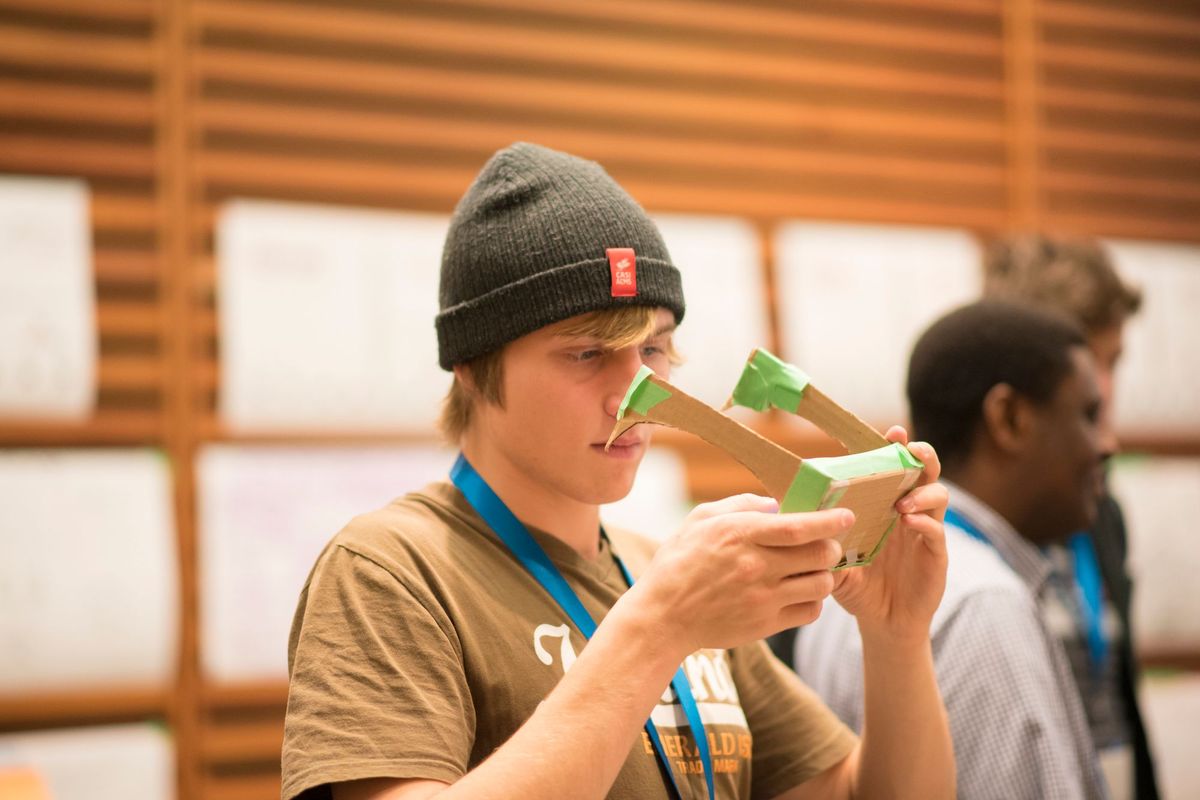A few years ago, I got a DM from a colleague on a Sunday morning that led us to develop a transformational approach to innovation in higher education.
He'd been hearing about the success of organizations like IDEO in applying human-centred design to complex challenges and wanted to know if I'd be up for running an experimental design workshop in Ontario to test out a new way to "do" innovation in higher ed.
Now, those of you who work in the post-secondary system know that it's notoriously difficult to create real change in a culture grounded in centuries of tradition, tradition and more tradition. But I had some new ideas I wanted to try – so jumped on board.
Fast forward a couple of months and I found myself spending the day with 20+ students, testing out a story-driven approach to participatory design. The challenge we had set for the day was to find ways to make the higher education experience even better than it already was.
After some preliminary work, they came up with amazing future visions for learning that included immersive undersea laboratories, high-speed internet for Arctic students and AI tutor buddies. Then, I asked them to break into teams and build simple prototypes, to test their ideas out and see how they might work.
I gave them lots of physical resources to build with – and very clearly told them they could NOT use any technology. Why? My experience had been that tech at this stage just got in the way of creativity and became a distraction.
Five minutes after they split up, I noticed a group of four high school students at the back of the room – all working on their smartphones. Irritated, I sauntered over. "Hey, team. Whatcha doing? I just finished saying 'no technology'."
Unfazed, they looked at me. "We just built a virtual world for our classroom and now we're populating it with learning objects." I was stunned. I can't even send an email on my phone in five minutes.
I realized then that I'd brought my own, old school biases into the experience and they were totally going to hold everybody back. Acknowledging my mistake, I congratulated them. "Oh. Excellent. Okay then, carry on." And I proceeded to get the hell out of their way.
In just 8 hours, those teams of "kids" built 7 viable prototypes for innovations that had the potential to transform higher education. Our work that day became the foundation for a highly successful, multi-year Student Experience Design Lab that did something nobody else had ever done – put students in charge of designing innovations to make higher ed even better.
Looking back, I'm reminded that innovation leadership isn't about having all the answers.
- It's about creating the conditions for people to bring their diverse experiences and ideas together to play, experiment, make and break shit, and learn.
- It's about recognizing that the people we're designing for know more about what they need than we ever can.
- It's about discovering and overcoming our own biases to open up to new sources of ideas and inspiration.
- It's about having the courage to challenge cultures and traditions that say, "This is the way we always do it" to say "Maybe we could do even better".
Most importantly, it's about letting go - a lesson I continue to learn every day.





